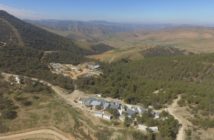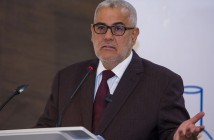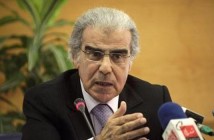By SOUHAIL KARAM | REUTERS
Published: Oct 1, 2011 17:22 Updated: Oct 1, 2011 17:22
DAKHLA, Western Sahara: Moroccan security forces were deployed in the city of Dakhla in the disputed territory of Western Sahara this week after an outburst of violence that pitted members of the indigenous Sahrawi population against their Moroccan neighbors.
Moroccan officials said 7 people were killed after rival groups of supporters clashed following a soccer match last Sunday, and local criminals then joined in the violence.
“Those behind the clashes are a minority: they are thugs and traffickers,” said a senior government source in the city. “It should not affect the general course of things.”
But accounts from local people suggested the root cause of the clashes was not soccer hooliganism but the tensions between natives of Western Sahara and the Moroccans who had arrived in large numbers since Morocco annexed the former Spanish colony in 1975.
The clashes indicate that the “hearts of Sahrawis have yet to be won” by the Moroccan authorities, said Mustapha Khalfi, editor of Moroccan daily newspaper Attajdid.
Morocco says Western Sahara, a sparsely populated tract of desert, should come under its sovereignty, while independence movement the Polisario Front says it is an independent state.
The Polisario waged a guerrilla war against Moroccan forces until the United Nations brokered a cease-fire in 1991. Attempts to reach a lasting deal since then have foundered.
Dakhla lies on the Atlantic Ocean about 1,600 km south of the Moroccan capital.
Local residents and officials say clashes broke out between residents of the Wakala III neighborhood — where most of the people came from Morocco — and surrounding districts populated mainly by Sahrawis.
Fatima, a Wakala resident in her late 30s, said she was sleeping when she felt her husband nudging her to wake up. “He could not talk: He had a knife to his throat,” she said, declining to give her full name.
“They were three men and their faces were covered. I knelt and kissed their feet begging them not to hurt us and they just left and broke some items on their way out.”
Military cordon
A heavy military presence in the first days after the violence was being scaled back, but late this week, dozens of military vehicles dotted a barren plot of land that divides Wakala from the mainly Sahrawi neighborhoods nearby.
To guard against any further attacks, people in Wakala had erected improvised stone barricades on many of its potholed streets. Many houses had their windows shattered.
“They (the Sahrawis) don’t want us to stay here,” 55-year-old plumber Abdelilah Belfadel said. “I have been living in Dakhla for 30 years My 20-year-old son was born here.”
Sahrawis also suffered in the violence. A private school in Wakala, which belongs to a Sahrawi member of Morocco’s parliament, was burned leaving close to 500 pupils out of class.
In the neighborhood of Al-Masjid, or the mosque, with a higher density of Sahrawis, four homes were burned and a dozen vehicles were vandalized or set on fire.
Mohamed Habate Michan, a local Sahrawi activist, said his community was loyal to Morocco’s King Mohammed, but was tired of being discriminated against by Moroccan officials.
“The problem is that officials don’t trust Sahrawis. For them we can only be profiteers or independence activists The police and interior ministry officials instigate trouble to justify their failures,” said Michan.
The Dakhla violence was the deadliest in Western Sahara since November, when Moroccan authorities said 13 people were killed, most of them security force members, in clashes with Sahrawi residents in another part of the territory.






